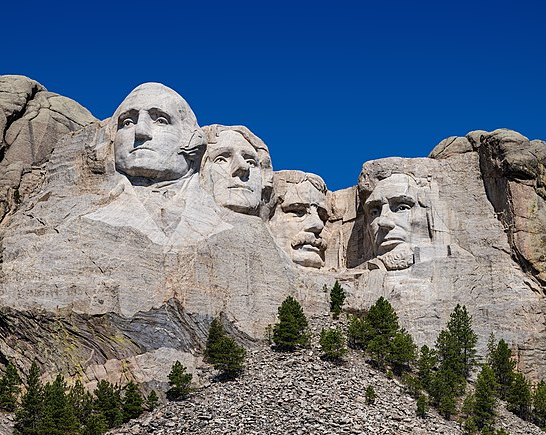The idea of Donald Trump being immortalized on Mount Rushmore has reemerged, igniting a fresh wave of debate. Is this a legitimate consideration or simply a way to stir up political enthusiasm? As the discussion unfolds, it raises important questions about tradition, feasibility, and the legacy of one of America’s most polarizing presidents.
The concept of adding Trump to Mount Rushmore isn’t entirely novel. During his presidency, Trump playfully acknowledged the idea, calling it a “good idea” in response to rumors. More recently, Florida Representative Anna Paulina Luna has championed the cause, introducing a bill to enshrine Trump’s likeness on the iconic monument. She argues that his leadership and accomplishments, particularly in boosting the economy and reshaping the judiciary, merit such an honor. With allies like Doug Burgum, the Secretary of the Interior, potentially advocating for the move, the proposal has garnered attention among Trump supporters.
I’ve officially introduced legislation to put President Trump’s face on Mount Rushmore.
His remarkable accomplishments for our country and the success he will continue to deliver deserve the highest recognition and honor on this iconic national monument. Let’s get carving! pic.twitter.com/vfFuebuS7F
— Rep. Anna Paulina Luna (@RepLuna) January 28, 2025
That said, achieving this feat is fraught with complications. Mount Rushmore, completed in 1941, celebrates four presidents whose legacies defined the nation. Adding a fifth face would require navigating a maze of legal, logistical, and ethical challenges. Congressional approval is mandatory, and the process would undoubtedly invite fierce public scrutiny. Furthermore, geologists have raised concerns about the mountain’s structural integrity, suggesting that carving another face might not even be possible. And given Trump’s divisive image, the proposal would almost certainly ignite protests and heated arguments nationwide.
Supporters of the idea emphasize Trump’s impact on domestic and international fronts. They laud his economic policies, trade negotiations, and efforts to “drain the swamp.” To them, these actions align him with the nation’s greatest leaders. Opponents, however, point to controversies like the Capitol riot and his handling of the pandemic as reasons to exclude him. Many historians and conservationists also caution against altering Mount Rushmore, arguing that it should stand as a timeless tribute to history.
While the proposal may resonate with Trump’s base, it currently lacks the momentum needed to become a reality. For now, it serves as a reminder of Trump’s lasting imprint on American politics—a figure who continues to provoke strong reactions, whether through policy or symbolism.


